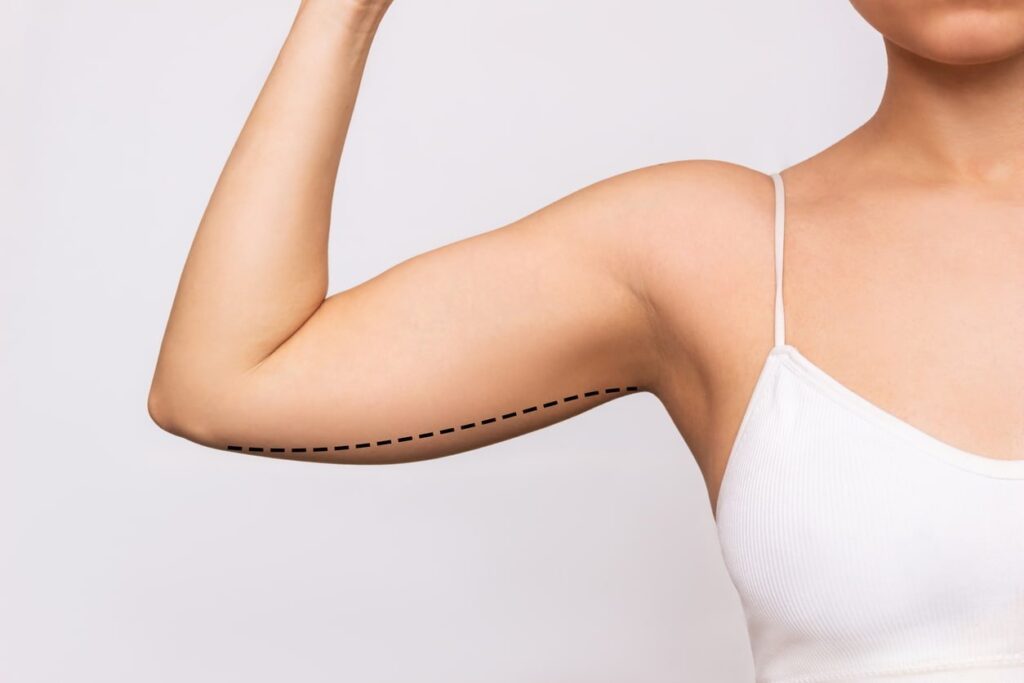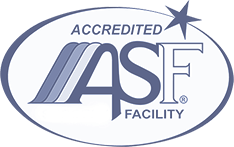Benefits and Beauty Through Arm Lift
Arm lift surgery, or brachioplasty, offers a range of advantages that extend beyond mere aesthetics, positively impacting both your appearance and well-being.
Our Achievements
Arm Lift Surgery Explained
An arm lift, also known as a Brachioplasty, is a surgical procedure designed to remove excess fat and skin from the upper arms. During an arm lift procedure, pockets of fat are removed from the upper arm area, along with any loose or excess skin. The remaining supportive tissue in the arms is tightened to create more contour in the arms while eliminating “bat wings” caused by extra skin. To ensure optimal results for an arm lift, patients should maintain a stable weight prior to surgery and take care during recovery to ensure proper healing. For best results, it’s important to work with an experienced board-certified plastic surgeon like Dr. Holmes, who can provide pre and post-operative care to ensure proper healing and help you achieve your desired look.

What to Expect During Your Arm Lift Consultation
Our staff at Aesthetic Surgery Center will assess your anatomy, address your concerns, and devise a unique surgical plan to achieve your goals.
You will discuss the following:
- The amount of skin and fat to be removed
- The location and type of scars that are likely to result from surgery
- Possible risks and complications associated with the procedure
- Expectations for the outcome
- Cost of the arm lift procedure
How to Prepare for Brachioplasty
To prepare for your surgery, follow your doctor’s guidance, which may involve discontinuing specific medications and fasting. Arrive early at the surgical facility for necessary tests and anesthesia administration. Wear loose-fitting attire for ease of removal. It’s crucial to have a support person accompany you, as driving won’t be an option post-surgery. Expect some post-operative swelling and bruising, which should gradually subside. Adhere to your doctor’s activity recommendations and abstain from smoking, as it hampers healing. If you encounter persistent pain, unusual drainage, fever, excessive bleeding, or vomiting, promptly consult your doctor. A temperature of 100.4°F or higher necessitates an immediate call to your healthcare provider. Lastly, follow up as directed by your doctor to minimize complications and enhance your surgical results.
The objective is to remove the loose, fatty tissue that forms “bat wings” on the underside of the arms. Get a trimmer look exactly when you want to wear short sleeves, tank tops, strapless dresses, swimming costumes, and other such apparel. It may be time for you to visit a board-certified plastic surgeon for an arm lift consultation.
CALL TODAY TO SCHEDULE YOUR CONSULTATION
Arm Lift Procedure

Arm lift surgery is performed on an outpatient basis under IV sedation or general anesthesia. One incision is made along the inside of the arm from the armpit to the elbow, removing the appropriate amount of skin and fat. The surgeon removes enough skin and tissue by carefully lifting it away from the arm’s underlying muscles.
The depth of your incisions is determined by the amount of skin laxity you have. In people with little flexibility, incisions may be limited to the lower limb region. Patients with looseness can benefit from the incisions running down the chest wall and creating a better arm and chest form.
Sterile dressings are applied, and compression garments are placed over your arms. This supports them as you heal and aids in decreasing bruising and swelling.
Although Brachioplasty scars tend to extend from the elbow to the underarm, many patients still feel that their arms look and feel better and do not mind the scar.
Arm Lift Recovery
Arm lift recovery may seem daunting, but it’s a relatively straightforward process. After the first week, where you should avoid heavy lifting and strenuous activities, your second week will bring a reduction in pain, allowing for everyday tasks. In the third week, consider returning to work while maintaining care for incisions and avoiding sun exposure. In the fourth week, normalcy begins to return; you can exercise with caution, use a compression garment to reduce swelling, and apply sunscreen. Though initial scars may appear noticeable, they’ll gradually fade over the first year, making recovery from arm lift surgery more manageable than anticipated.
Arm Lift Candidates
If you are unhappy with the appearance of your upper arms, you may be a good candidate for an arm lift. The best way to determine if you are a good candidate is:
You’ve Noticed Looser Skin As You’ve Grown Older
As you age, the elastic properties of your skin begin to deteriorate. Sagging and excess flab are a natural consequence of the aging process, leaving their mark on areas like the arms, abdomen, neck, and thighs. To combat the bat wings that have formed because of elastin breakdown.
A Major Amount of Weight Loss
After undergoing weight loss, excess skin can be left behind. An arm lift is the best way to help diminish any sagging that has occurred because of your lost weight. Arm lifts are also used for patients who have lost large amounts of weight throughout their lifetime and want to tighten up loose skin.
Hereditary
Unfortunately, some people inherit their sagging upper arms from their families. Even if you are young or have never been overweight, your loose, flabby bat wings may be due to your genetics. To counteract the bat wings, have an arm lift consultation to get started.
Related Procedures: Rhinoplasty, Revision Rhinoplasty, The UpLift Facelift, Endoscopic Mid Facelift Surgery, Eyelid Surgery, Eyebrow Transplant, Chin & Cheek Surgery, Skin Cancer Reconstruction, Hair Transplant Surgery, Surgery of the Ears, Fat Transfer (Fat Grafting), Lip Augmentation, Endoscopic Eyebrow Lift, Scar Revision
Why choose Aesthetic Surgery Center
Dr. Anurag Agarwal, M.D., F.A.C.S.
- Double board-certified facial plastic surgeon by the American Board of Facial Plastic and Reconstructive Surgery and the American Board of Otolaryngology – Head and Neck Surgery.
- Oral examiner and Board of Directors for the American Board of Facial Plastic and Reconstructive Surgery
- Former President of the Florida Society of Facial Plastic and Reconstructive Surgery
- Received his Doctor of Medicine at Philadelphia’s MCP-Hahnemann School of Medicine in 1999 and was elected to the Alpha Omega Alpha Honor Society.
- In 2016, Dr. Agarwal was honored at the annual American Academy of Facial Plastic and Reconstructive Surgery national meeting.
Richard W. Maloney, M.D., F.A.C.S.
- Double board-certified facial plastic surgeon by both the American Board of Facial Plastic and Reconstructive surgery and the American Board of Otolaryngology-Head and Neck Surgery.
- Served as chief investigator for numerous laser application systems for CO2, Argon, Nd:YAG, ER:YAG and Krypton lasers used in Facial surgery.
- Fellow American Academy of Facial Plastic and Reconstructive Surgery and American Academy of Cosmetic Surgeons
- Board-certified plastic surgeon by the American Board of Plastic Surgery.
- Attended medical school at UNMC (University of Nebraska Medical College).
- Was elected to the Alpha Omega Alpha Honor Society.
- Member of The Aesthetic Society, the Florida Medical Association, and Collier County Medical Society.
- General surgery residency at Loyola University Medical Center in Maywood, IL
- Plastic surgery residency at Cleveland Clinic Florida








